1. Swaminathan R. Magnesium metabolism and its disorders. Clin Biochem Rev. 2003; 24:47–66. PMID:
18568054.
2. Noronha JL, Matuschak GM. Magnesium in critical illness: metabolism, assessment, and treatment. Intensive Care Med. 2002; 28:667–679. PMID:
12107669.

3. DuBose TD, Hamm LL. Acid-base and electrolyte disorders : a companion to Brenner & Rector's the kidney. 2002. Philadelphia: Saunders;p. 435–487.
4. de Rouffignac C, Quamme G. Renal magnesium handling and its hormonal control. Physiol Rev. 1994; 74:305–322. PMID:
8171116.

5. Saris NE, Mervaala E, Karppanen H, Khawaja JA, Lewenstam A. Magnesium. An update on physiological, clinical and analytical aspects. Clin Chim Acta. 2000; 294:1–26. PMID:
10727669.
6. Nadler JL, Rude RK. Disorders of magnesium metabolism. Endocrinol Metab Clin North Am. 1995; 24:623–641. PMID:
8575413.

7. Kayne LH, Lee DB. Intestinal magnesium absorption. Miner Electrolyte Metab. 1993; 19:210–217. PMID:
8264506.
8. Quamme GA, Rabkin SW. Cytosolic free magnesium in cardiac myocytes: identification of a Mg
2+ influx pathway. Biochem Biophys Res Commun. 1990; 167:1406–1412. PMID:
2322282.
9. Yu AS. Evolving concepts in epithelial magnesium transport. Curr Opin Nephrol Hypertens. 2001; 10:649–653. PMID:
11496060.

10. Konrad M, Weber S. Recent advances in molecular genetics of hereditary magnesium-losing disorders. J Am Soc Nephrol. 2003; 14:249–260. PMID:
12506158.

11. al-Ghamdi SM, Cameron EC, Sutton RA. Magnesium deficiency: pathophysiologic and clinical overview. Am J Kidney Dis. 1994; 24:737–752. PMID:
7977315.

12. Bringhurst FR, Demay MB, Krane SM, Kronenberg HM. Fauci AS, editor. Bone and mineral metabolism in health and disease. Harrison's principles of internal medicine. 2008. 17th ed. New York: McGraw-Hill;p. 2365–2377.
13. Alexander RT, Hoenderop JG, Bindels RJ. Molecular determinants of magnesium homeostasis: insights from human disease. J Am Soc Nephrol. 2008; 19:1451–1458. PMID:
18562569.

14. Fox C, Ramsoomair D, Carter C. Magnesium: its proven and potential clinical significance. South Med J. 2001; 94:1195–1201. PMID:
11811859.
15. Whang R, Ryder KW. Frequency of hypomagnesemia and hypermagnesemia. Requested vs routine. JAMA. 1990; 263:3063–3064. PMID:
2342219.

16. Prebble JJ. Primary infantile hypomagnesaemia: report of two cases. J Paediatr Child Health. 1995; 31:54–56. PMID:
7748693.

17. Torralbo A, Portoles J, Perez Perez AJ, Barrientos A. Hypomagnesemic hypocalcemia in chronic renal failure. Am J Kidney Dis. 1993; 21:167–171. PMID:
8430677.

18. Yu ASL. Brenner BM, Rector FC, editors. Disturbances of magnesium metabolism. Brenner & Rector's the kidney. 2000. 6th ed. Philadelphia: Saunders;p. 1055–1070.
19. Swaminathan R. Davies DM, Ferner RE, Glanville HD, editors. Disorders of metabolism 2. Davies's Textbook of Adverse Drug Reactions. 1998. 5th ed. Arnold, Edward;p. 442–540.
20. Ellison DH. Renal magnification by EGF. Nephrol Dial Transplant. 2008; 23:1497–1499. PMID:
18299299.

21. Dorup I. Magnesium and potassium deficiency. Its diagnosis, occurrence and treatment in diuretic therapy and its consequences for growth, protein synthesis and growth factors. Acta Physiol Scand Suppl. 1994; 618:1–55. PMID:
8036903.
22. Panichpisal K, Angulo-Pernett F, Selhi S, Nugent KM. Gitelman-like syndrome after cisplatin therapy: a case report and literature review. BMC Nephrol. 2006; 7:10. PMID:
16723030.

23. Allen GG, Barratt LJ. Effect of cisplatin on the transepithelial potential difference of rat distal tubule. Kidney Int. 1985; 27:842–847. PMID:
2410659.

24. Markmann M, Rothman R, Reichman B, Hakes T, Lewis JL Jr, Rubin S, et al. Persistent hypomagnesemia following cisplatin chemotherapy in patients with ovarian cancer. J Cancer Res Clin Oncol. 1991; 117:89–90. PMID:
2007614.

25. Huey CG, Chan KM, Wong ET, Nelson JM, Durand M. Los Angeles County-University of Southern California Medical Center clinical pathology case conference: extreme hypermagnesemia in a neonate. Clin Chem. 1995; 41:615–618. PMID:
7720255.

26. Oren S, Rapoport J, Zlotnik M, Brami JL, Heimer D, Chaimovitz C. Extreme hypermagnesemia due to ingestion of Dead Sea water. Nephron. 1987; 47:199–201. PMID:
3683688.

27. Swaminathan R. Davison AM, editor. Hypo - hypermagnesemia. Oxford textbook of clinical nephrology. 1998. 2nd ed. Oxford ; New York: Oxford University Press;p. 271–310.
28. Jaing TH, Hung IJ, Chung HT, Lai CH, Liu WM, Chang KW. Acute hypermagnesemia: a rare complication of antacid administration after bone marrow transplantation. Clin Chim Acta. 2002; 326:201–203. PMID:
12417113.

29. Hutchison AJ, Merchant M, Boulton HF, Hinchcliffe R, Gokal R. Calcium and magnesium mass transfer in peritoneal dialysis patients using 1.25 mmol/L calcium, 0.25 mmol/L magnesium dialysis fluid. Perit Dial Int. 1993; 13:219–223. PMID:
8369353.

30. Clark BA, Brown RS. Unsuspected morbid hypermagnesemia in elderly patients. Am J Nephrol. 1992; 12:336–343. PMID:
1489003.

31. Cholst IN, Steinberg SF, Tropper PJ, Fox HE, Segre GV, Bilezikian JP. The influence of hypermagnesemia on serum calcium and parathyroid hormone levels in human subjects. N Engl J Med. 1984; 310:1221–1225. PMID:
6709029.

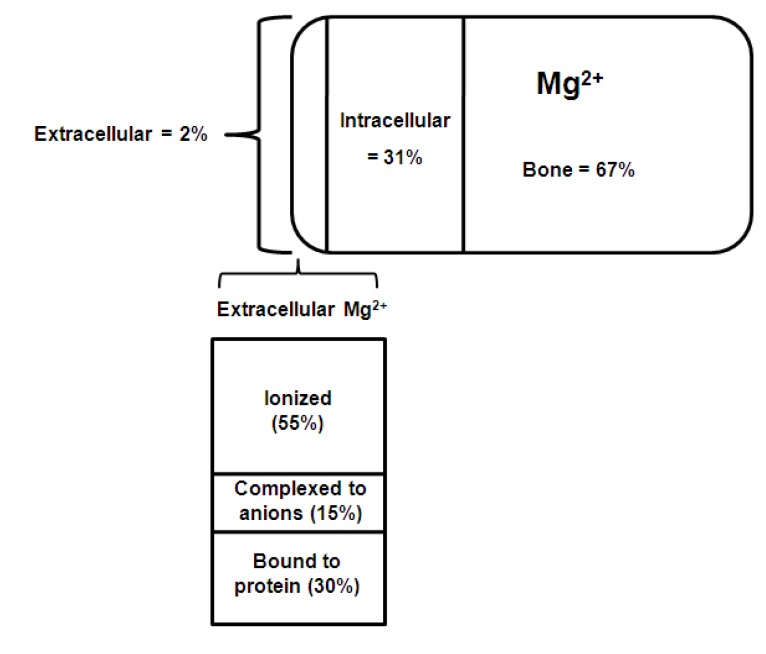
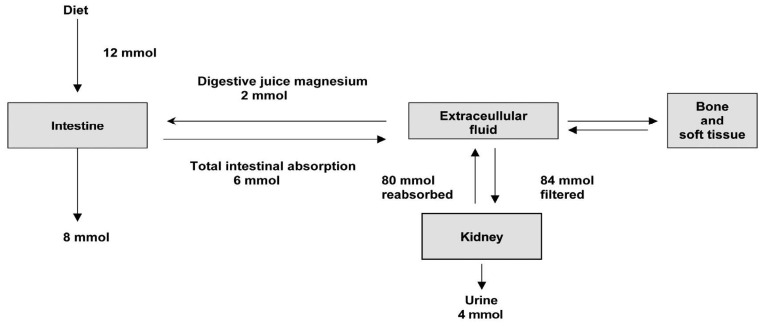
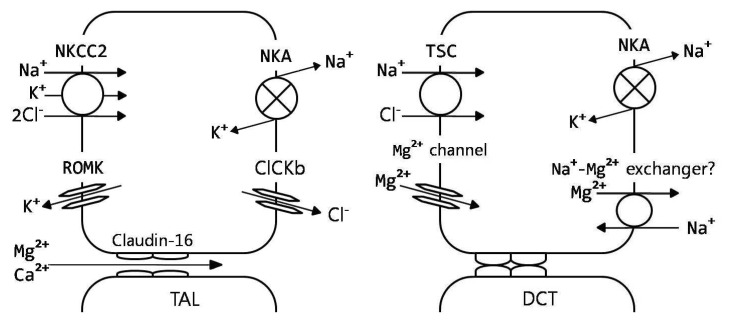




 PDF
PDF ePub
ePub Citation
Citation Print
Print


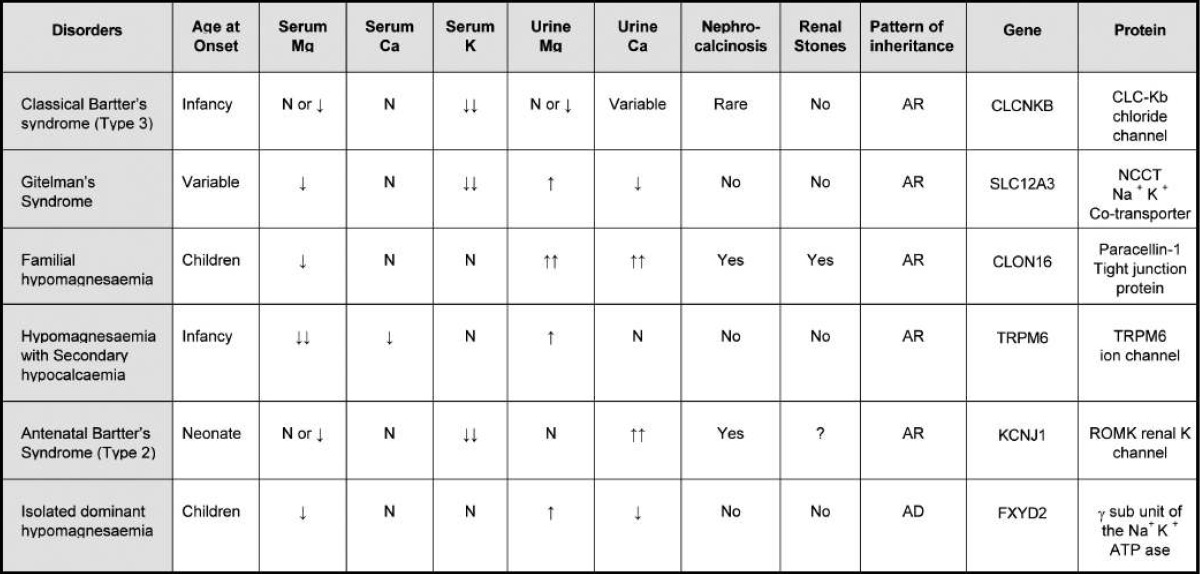
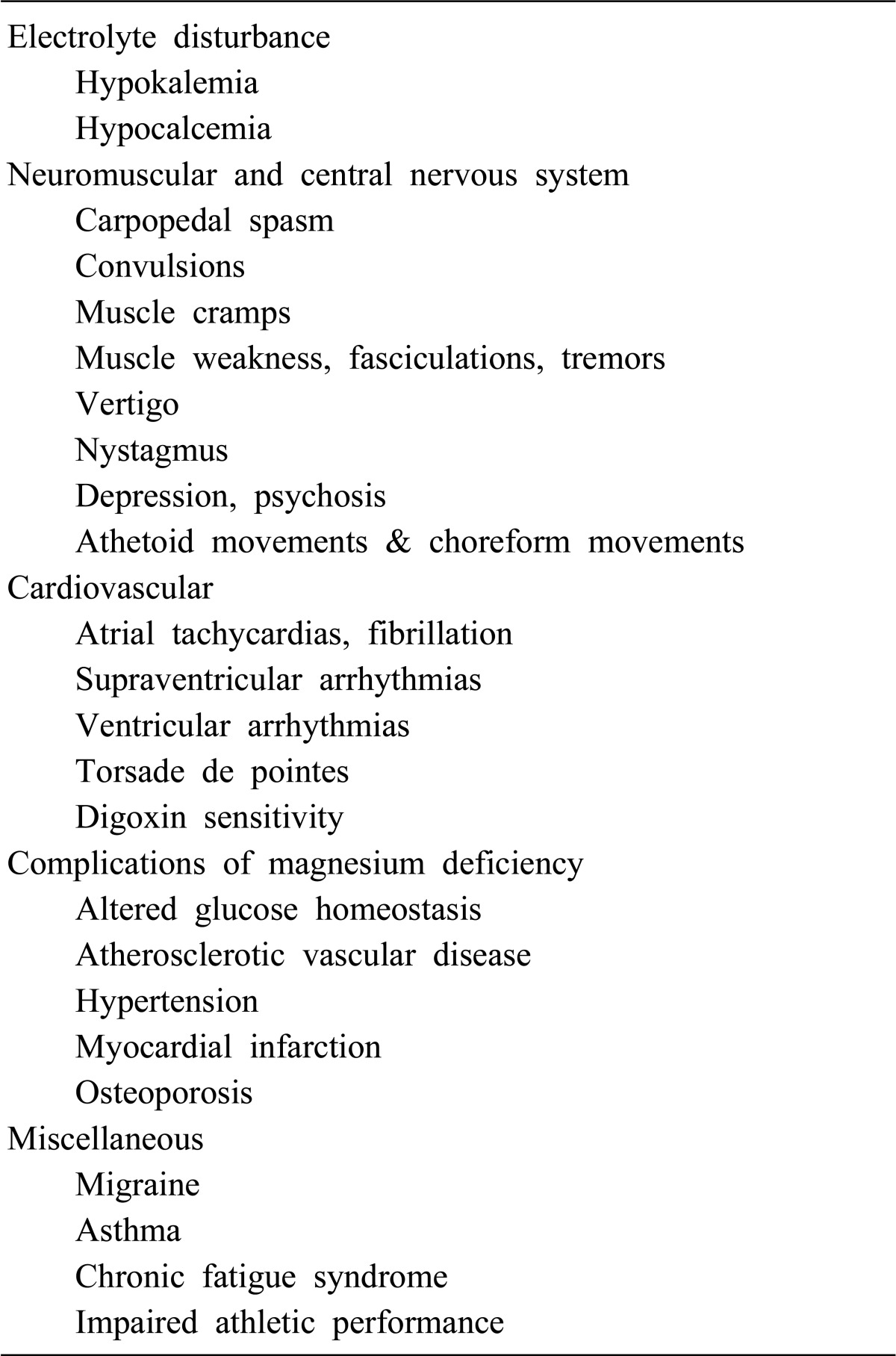
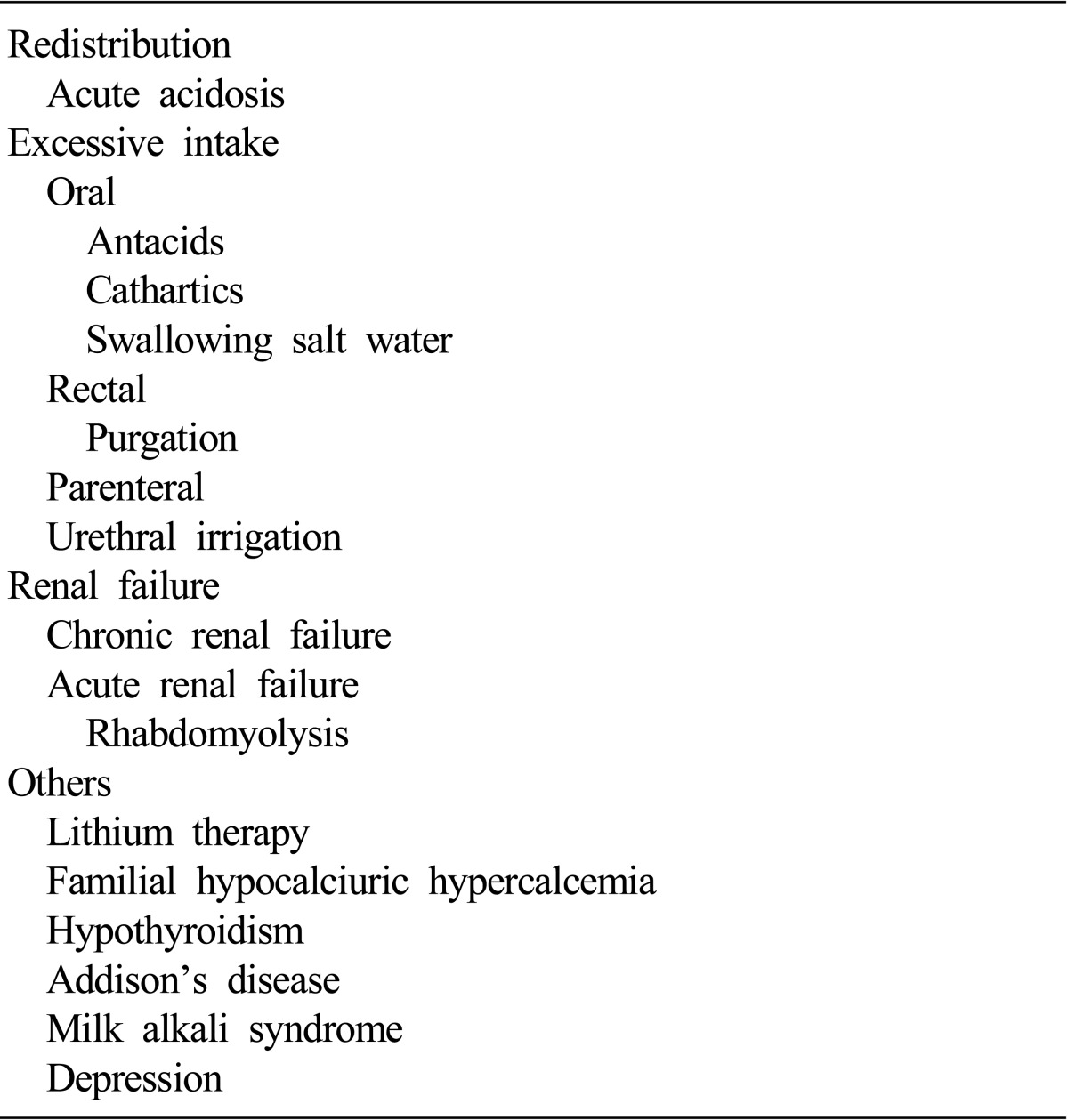
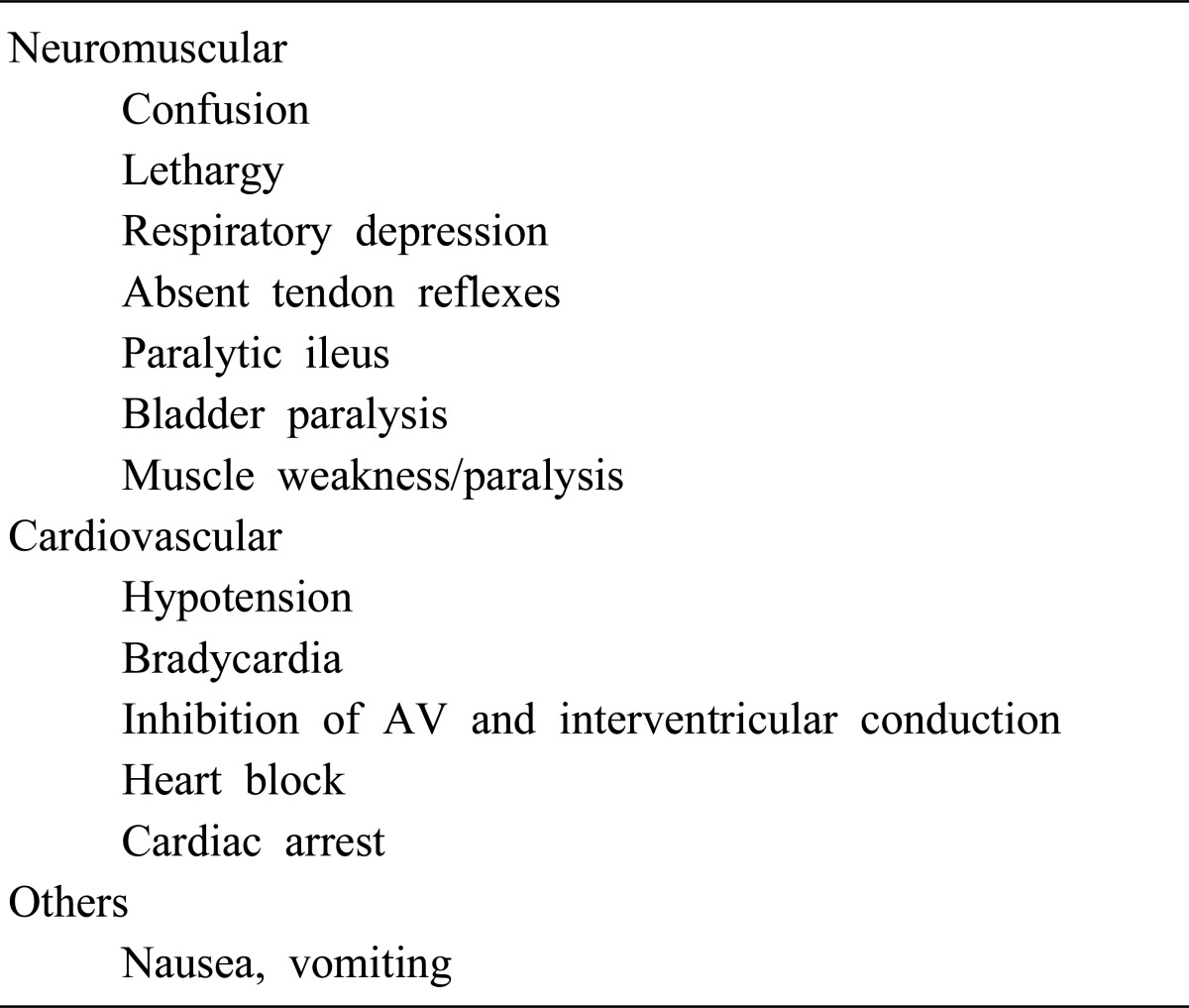
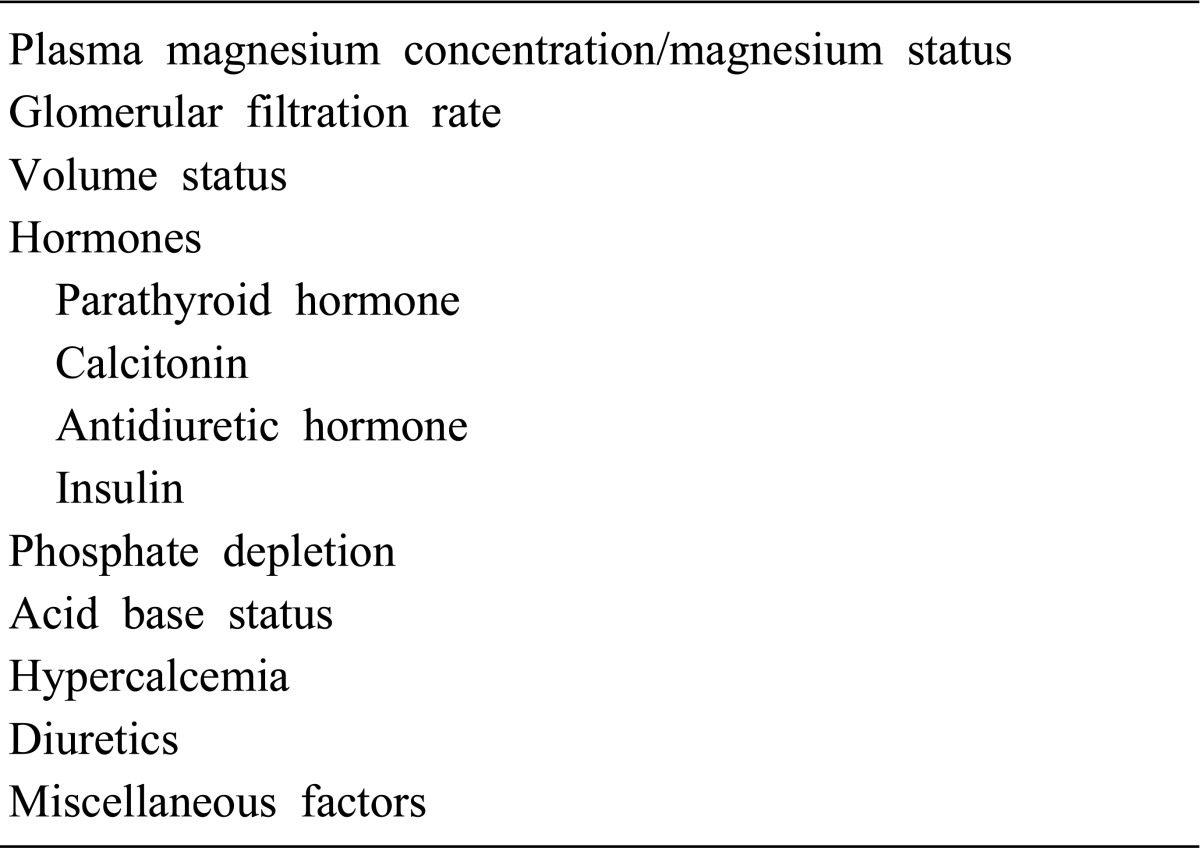
 XML Download
XML Download